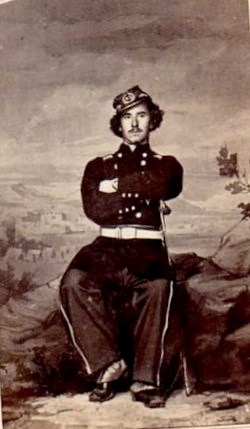Last updated: January 13, 2023
Article
Civil War Soldiers buried at St. Paul's who died in service

National Park Service
Civil War Soldiers buried at St. Paul's who died in service
Almost all of the Union veterans buried in the historic cemetery at St. Paul’s lived through the great national conflict. They resumed civilian lives and died, usually from natural causes, decades later. Families memorized their military service through a veterans stone, supplied in gratitude by the federal government. Two Civil War soldiers buried here made the ultimate sacrifice, dying as combatants. Both of these men passed from disease, which accounted for two-thirds of Union deaths.
One of them was Peter Bertine, who served with the 11th New York Cavalry, rising to the rank of quartermaster sergeant. Beginning in February 1863, he was confined to Camp Relief, a soliders hospital in Washington, where he died on September 29, 1863. Cause of death was listed as “delirium tremens,” or seizure caused by withdrawal from alchoholism, even though his family insisted the sergeant died of typhoid. This was an important distinction since the Army’s official casue of death meant that Sarah Bertine, his wife, was denied a widow’s pension.
Another wartime casualty was Lieutenant Joseph Mead of the 119 New York Volunteer Infantry, who served for about six months before contracting typhoid and dying on February 11, 1863 at age 24, one of an estimated 35,000 Northern soldiers whose lives were taken by the bacterial disease. He was interred in the prominent Masterton burial vault, owned by his brother in law, a master stone carver and prioprietor of a large marble quarry in nearby Tuckahoe.
